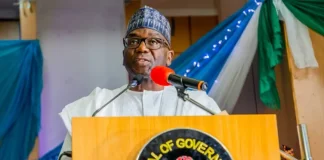- Experts advocate diversification of power sources, want more output from clean energy
An investigation by THISDAY on the geographical spread of Nigeria’s electricity generation sources has shown that out of the 36 states in the country and the Federal Capital Territory, Abuja, only 12 states, majority of which are located in the South, supply the entire volume of electricity used in the country.
According to data from the Advisory Power Team in the office of the Vice President, Prof. Yemi Osinbajo, about 29 power generation plants are currently in operation in the country. These plants, according to the Association of Power Generation Companies (APGC), an umbrella association of the Gencos, had an overall generation capacity of 12,000 megawatts (MW) in 2017.
However, a geographical map of the plants’ locations obtained at the weekend in Abuja by THISDAY from the webpage of the Advisory Power Team showed that with the exception of Niger and Kogi states, which host three hydro power Gencos – Kainji, Jebba and Shiroro plants – the other Gencos are all located in states in the South.
The 12 states, which host power stations that generate the power used across the country, are Niger, Lagos, Ogun, Rivers, Abia, Imo, Ondo, Cross River, Bayelsa, Edo, Kogi, and Delta.
In Niger, there is the Kainji hydro power station, which was completed in 1968 with an installed generating capacity of 760MW; Jebba power station with an installed generating capacity of 576.8MW, which was commissioned in 1985; and Shiroro power station with an installed generating capacity of 600MW, which was completed in 1990.
In Lagos, there is the Egbin gas power station with an installed generating capacity of 1, 320MW, which is currently the largest Genco in the country. It was reportedly completed between 1985 and 1986. There is also in Lagos the AES barge Independent Power Plant (IPP) with an installed capacity of 270MW, which was completed about 2001, and the Paras Energy plant.
Ogun State has the Olorunsogo power station with installed capacity of 335MW, completed in 2007, as well as the 675MW Olorunsogo-2 built under the National Integrated Power Projects (NIPP) by the Niger Delta Power Holding Company (NDPHC), which is owned by the three tiers of government in the federation.
Delta State hosts the 1, 020MW Sapele power station built in 1981; 972MW Transcorp Ughelli power station reportedly built between 1966 and 1990; 480MW Okpai power station completed in 2005 as an IPP by Agip Oil Company; and the 450MW Sapele NIPP plant.
The 977MW Afam I-IV and V power plants were completed between 1982 and 2002 in River State, which also has the 642MW Afam VI power plant owned by the Shell Petroleum Development Company (SPDC) Joint Ventures; 150MW Omoku power station; 136MW Trans-Amadi power station; 180MW Rivers IPP, and Omoku-2 NIPP plant with installed generating capacity of 225MW.
In Kogi, there is the 414MW Geregu-1 power station and 434MW Geregu-2 II NIPP power station, just as Ondo has the 335MW Omotosho-1 power station and 450MW Omotosho NIPP power station.
In Abia, there is the 1074MW Alaoji NIPP power station, just as there is the 450MW NIPP Ihovbor power station in Edo and another 450MW power station built by Azura Power. Imo has the 338MW NIPP Egbema power station; Cross River has the 561MW NIPP Calabar power station; while Bayelsa has the 225MW NIPP Gbarain power plant.
Some experts explained that though it was not out of place to have a country’s energy sources concentrated in one region, it would take a lot to have power transported to areas without generation sources. They also stated that every part of Nigeria has sources of electricity that could be exploited, but the country was not doing enough to maximise the potentials.
A member of the Monetary Policy Committee (MPC) of the Central Bank of Nigeria (CBN) and former president of the Nigerian Association for Energy Economics, Prof. Adeola Adenikinju, stated that it would be of immense benefit to Nigeria to expand its energy supply mix. Adenikinju charged the new chairman of the Nigerian Electricity Regulatory Commission (NERC), Professor James Momoh, to initiate regulations that would facilitate investment in the various energy sources in the country.
Similarly, the Country Lead for Power for All, an international advocacy network for clean and reliable renewable energy sources, Ms. Ify Malo, stated that by exploring other energy sources, Nigeria could decentralise its energy generation and supplies to reach all citizens.
Malo explained: “Nigeria has a lot to benefit from diversifying its energy sources. There’s no reason why Nigeria shouldn’t be doing solar power generation in a big way. States in the North can and should generate power from the abundant sun energy that’s up North. There are hydro potentials in both the North and South of Nigeria; there is also potentials for wind.
“By exploring its abundant clean energy resources across various states, we can decentralise electricity generation and distribution across Nigeria to boost and complement the grid power supply in our country. Our clean energy resources and potentials are enough to meet and surpass our power demand and reach even more of the most remote communities in states and regions across Nigeria.”
Source: Thisday












